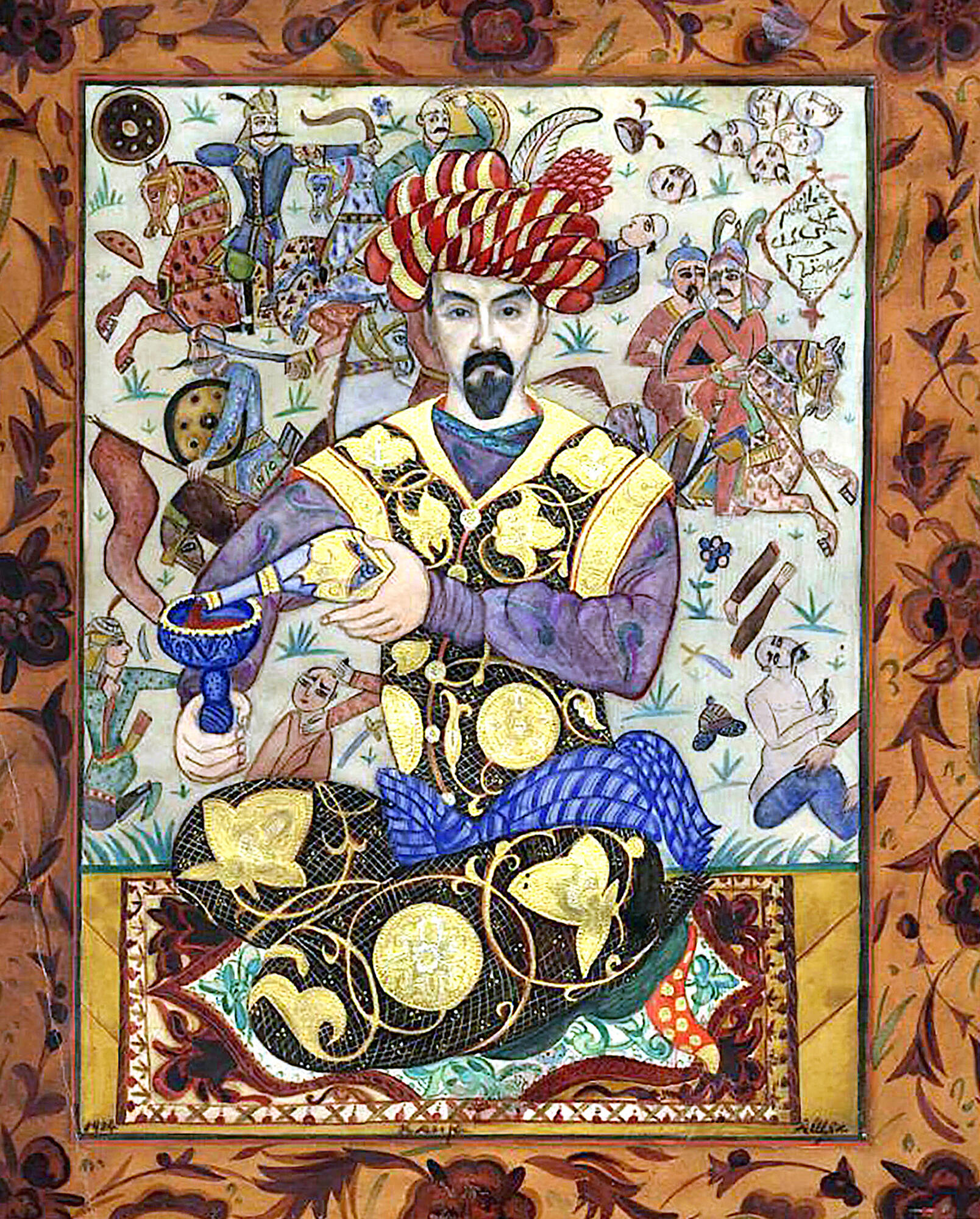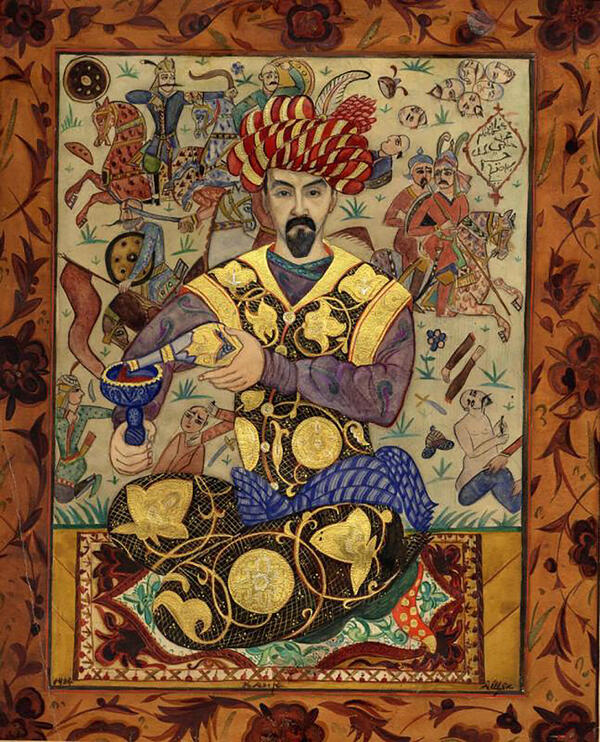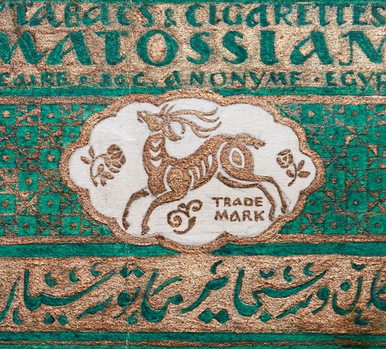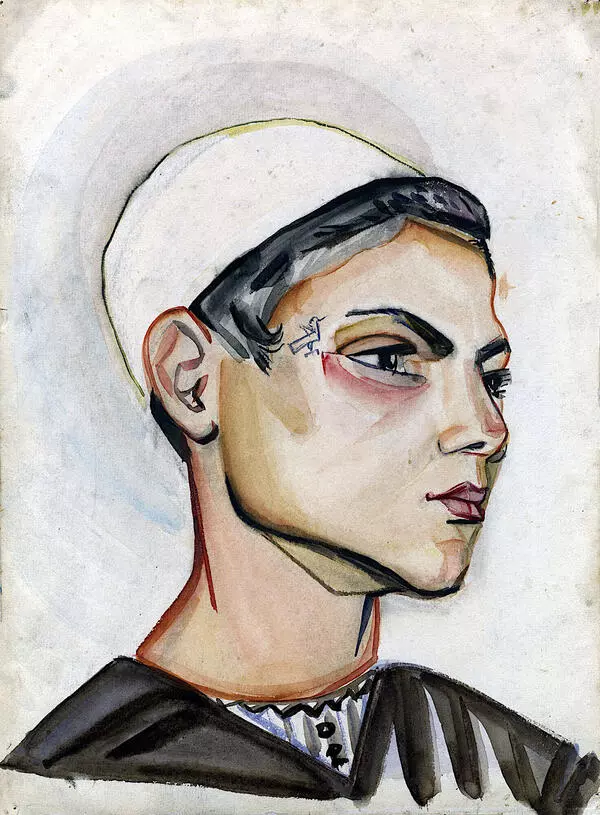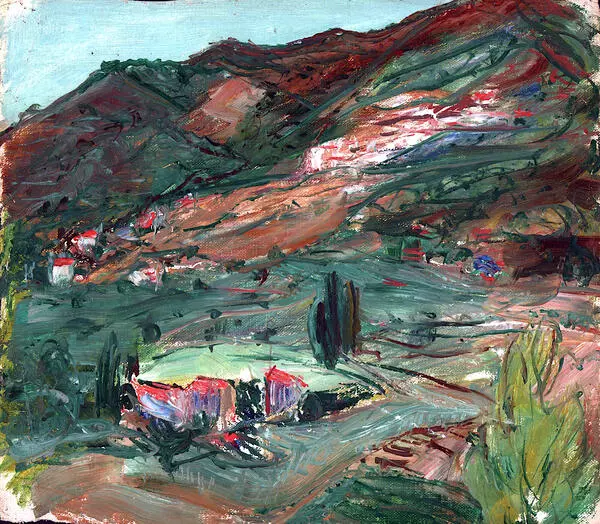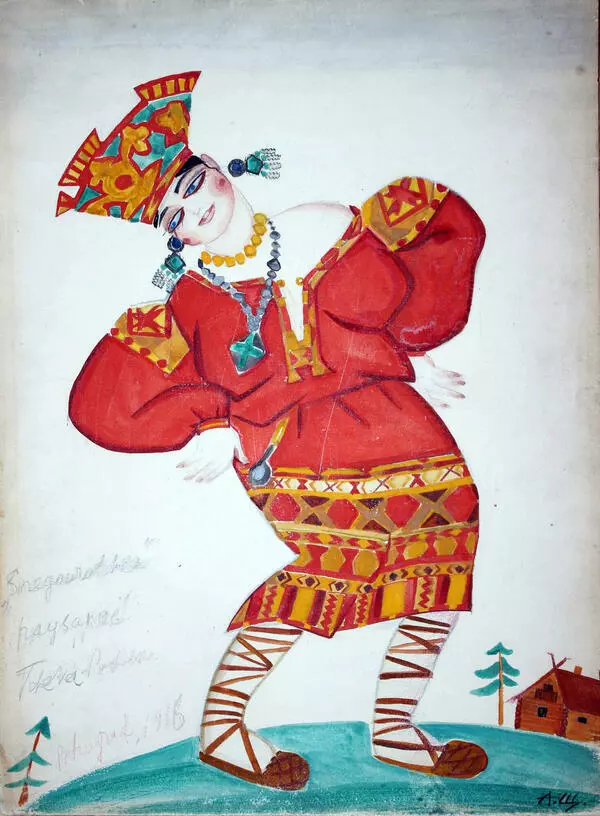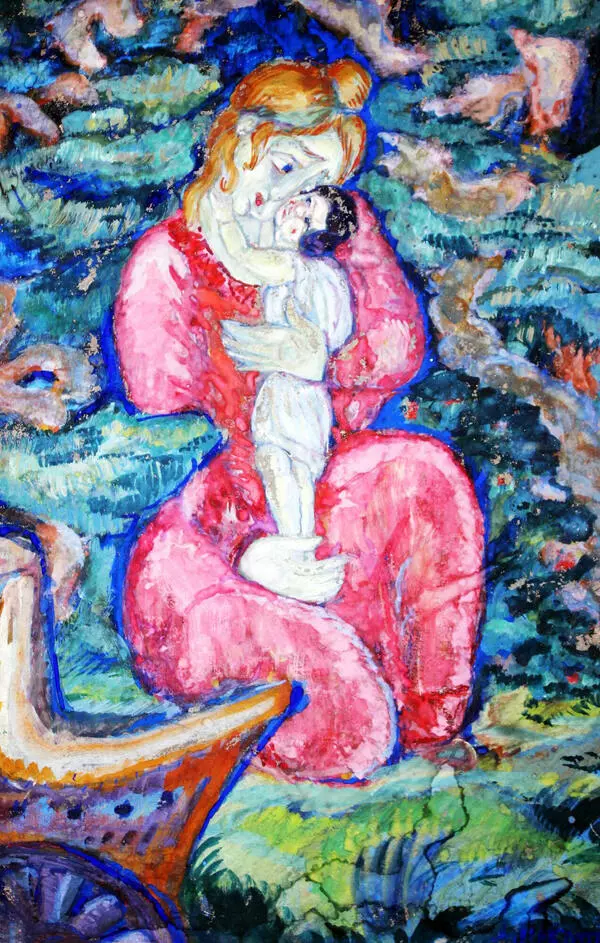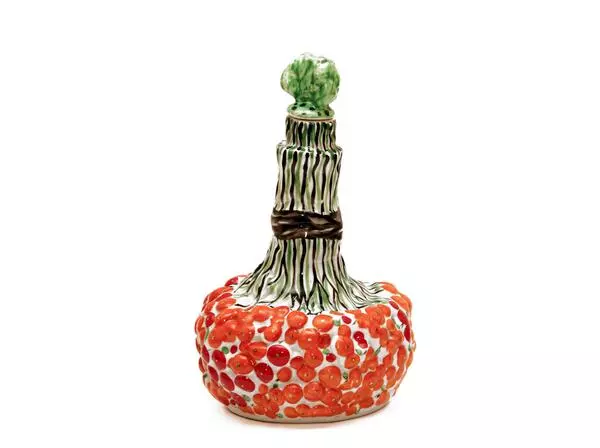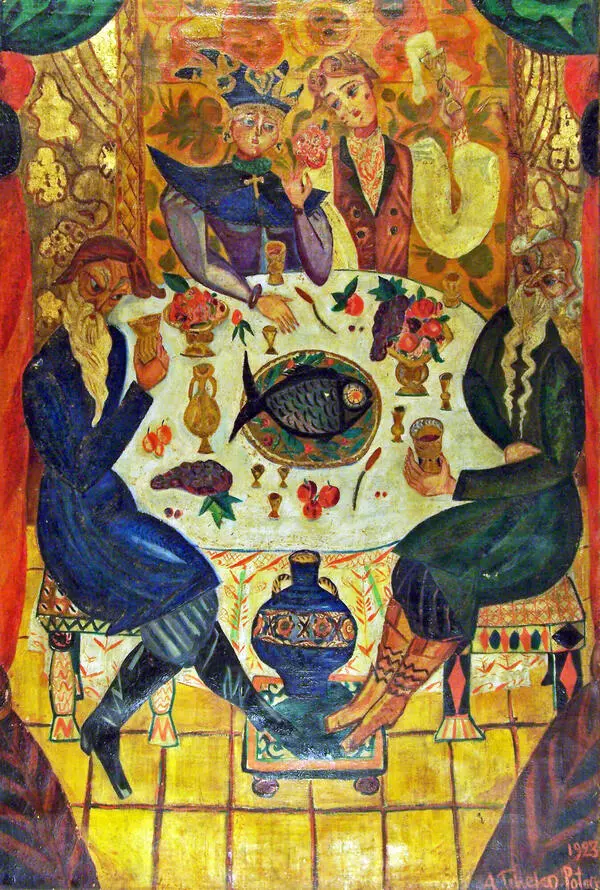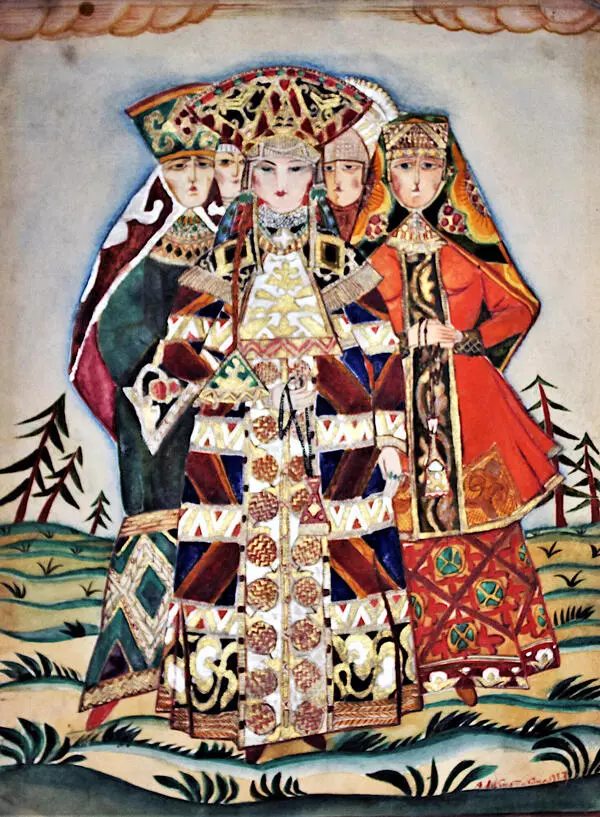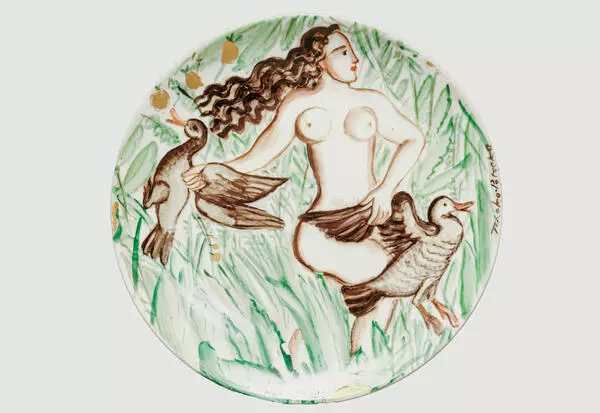The meeting of Bilibin and Shchekatikhina-Pototskaya, which took place in Cairo, was not a meeting of a teacher and a student, rather of fellow artists. From then on, they worked on their artistic careers together. They made a big trip around Asia. This period, which was not very long in itself, turned out to be very fruitful in terms of creativity. In the works of Shchekatikhina-Pototskaya, one can see how those qualities that distinguish a true artist began to appear. Bilibin taught his student internal discipline and shared with her the experience he had gained over many years of artistic work.
The portrait of Bilibin was created by Alexandra Vasilievna at the beginning of their shared life — during the period of falling in love and the joy of liberation from hunger and cold in Petrograd. Bilibin is depicted as an eastern fakir who magically changed the life of Shurochka and her little son. The powerful talent of Alexandra Vasilievna Shchekatikhina-Pototskaya, her love for grotesque, stylization and decorative elements was manifested in this small watercolor.
The artist managed to convey the diversity and amazing color combinations typical of the East, as well as the “eastern” technique of compositional building when the image covers the entire pictorial space. In general, the portrait is reminiscent of an eastern carpet. This work by Shchekatikhina-Pototskaya was highly appreciated in their family of artists, it even traveled with them from Egypt to Paris, and then from Paris to Leningrad.
